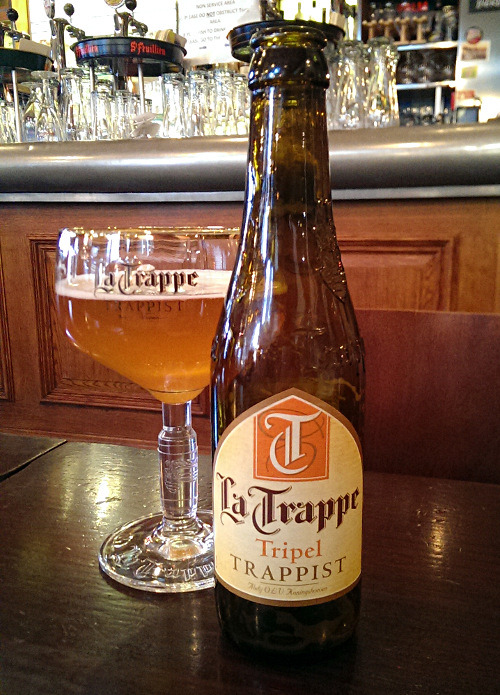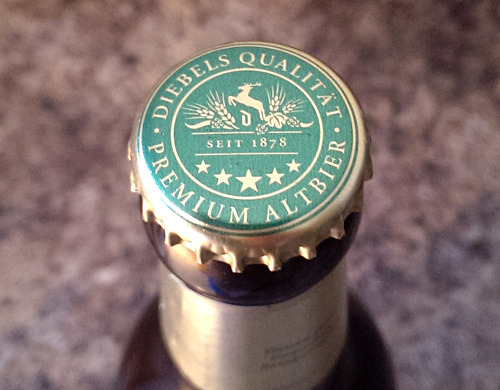Now, cards on the table, I’m not sure I’m going to like this one. Not that Meantime would ever make a bad beer, but if there are two styles I don’t tend to care much for, it’s wheat beers, and beers with any kind of fruit in them.
And here we are then, a Raspberry Wheat Beer. Still, it’s a good excuse for another trip back to The Old Brewery in Greenwich, where we sampled the Coffee Porter a week or so ago.

Much like the Coffee Porter, the Raspberry Wheat Beer is an ever-so-slight substitution for the original beer in The Book. The “Red Beer” covered in there no longer exists, but a touch of research suggests this one to be almost identical in all but name and ABV, being a fraction stronger at 5%. If anyone can confirm or deny this, do let me know in the comments.
Perhaps not surprisingly, the Raspberry Wheat Beer pours a pleasingly cloudy, frothy orangey-pink colour, and there’s an immediate waft of raspberry filling the air. Upon seeing a grown man drink a pink beer, one nearby American tourist did look a bit puzzled, but I can live with that.
To taste, it’s certainly fruity, but thankfully not over-sweet, which really wouldn’t be to my taste. Instead, the fruit is tart, perhaps slightly bitter, and perfectly balanced, with the tiniest hint of sourness. In fact the effect is more reminiscent of a Kriek, such as the Cantillon one, than any raspberry beer I can remember.
I think I detect Belgian yeast in there too, and all in all it quickly becomes apparent that these Meantime chaps really do know what they’re doing. It’s an extremely high-quality beer, and almost despite myself, I find myself enjoying it greatly.
Served chilled, the Raspberry Wheat Beer is hugely refreshing, and this would be a great summer afternoon beer. That said, even on a rainy evening in South East London, it’s no hardship to drink it. It was a very pleasant change from the usual, even though next time I’m in Greenwich I’d probably still opt for the IPA or the very tasty new Black Pale.
In conclusion, I’d say that this beer is a great example of why I persist with this ridiculous blog project. I simply wouldn’t have tried this beer otherwise, and I really would have been missing out.
Facts and Figures
| Brewery: | Meantime Brewing Company, Blackwall Lane, London SE10 |
| Style: | Beers made with Fruit, Spices, Herbs and Seeds |
| Strength: | 5.0% ABV |
| Found at: | The Old Brewery, Greenwich, London SE10 |
| Serving: | 330ml bottle |













